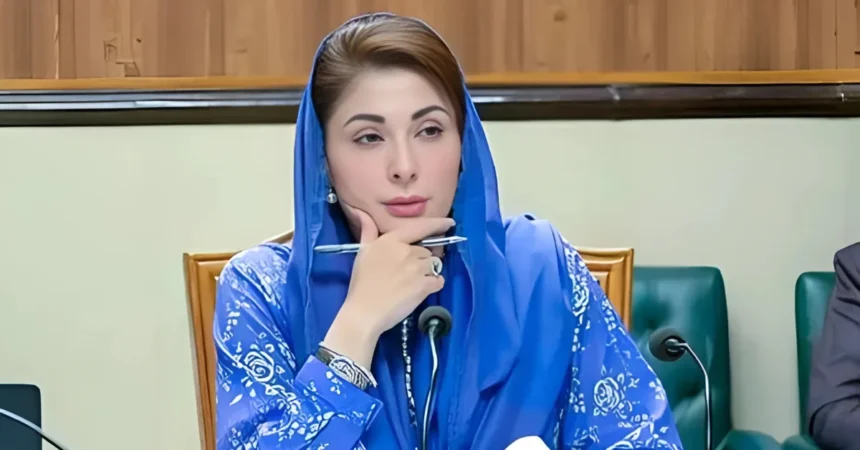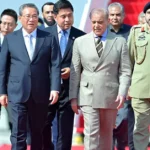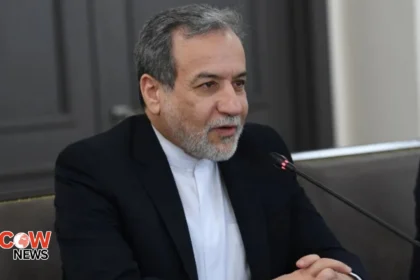In a decisive move to combat inflation, Punjab Chief Minister Maryam Nawaz has introduced a comprehensive price control mechanism. During the meeting held in Lahore, Maryam emphasized the need for a transparent and effective system that aligns with international standards to stabilize prices of essential commodities across the province.
Objectives of the Price Control Initiative
The primary objective behind this initiative is to regulate market prices, ensuring that basic goods remain affordable for the general population. Rising inflation has significantly impacted the purchasing power of citizens, and this mechanism aims to provide relief by curbing price manipulation. Through strategic implementation, the Punjab government is focused on establishing a system that promotes fair trade practices and discourages hoarding or overpricing.
Role of SMU in Price Regulation
During the meeting, Chief Minister Maryam Nawaz stressed the importance of the Strategic Management Unit (SMU) in executing this price control mechanism. She directed the unit to be fully operational within six months, ensuring that it can monitor and enforce price regulations effectively. The SMU will play a crucial role in data collection, market analysis, and coordinating with various departments to maintain market stability.
Ensuring Transparency and Accountability
A key component of this new mechanism is the emphasis on transparency and accountability. The Punjab government aims to create a fair pricing model where stakeholders, including retailers and suppliers, adhere to standardized pricing. By closely monitoring the supply chain, the administration seeks to eliminate any opportunities for illegal practices that lead to price hikes.
Comparison to International Standards
Maryam Nawaz’s approach to price control is rooted in international best practices. She noted that successful economies have adopted similar frameworks, which involve a mix of government oversight and market regulation. By aligning Punjab’s policy with global standards, the provincial government aims to create a sustainable model that will not only control inflation but also support long-term economic growth.
Impact on Local Markets
The implementation of this price control mechanism is expected to have a significant impact on local markets. Small businesses and consumers alike will benefit from a more stable pricing environment. The government’s intervention will help to shield the lower-income population from the adverse effects of inflation, ensuring that essential goods such as food, medicine, and household items remain accessible to all.
Collaborative Efforts with Local Bodies
The Punjab government is also working closely with local municipalities and district authorities to ensure that the price control mechanism is implemented uniformly across the province. This includes regular market inspections, enforcement of penalties for non-compliance, and the establishment of complaint cells where citizens can report any irregularities in pricing.
Addressing Public Concerns
One of the major concerns raised by the public has been the inconsistency in the prices of essential commodities, which vary significantly between urban and rural areas. To address this, Maryam Nawaz has directed relevant departments to ensure that price controls are applied uniformly across all regions of Punjab. Additionally, the administration is planning to roll out a public awareness campaign to educate citizens on their rights and the importance of reporting overpricing.
Long-term Vision for Price Stability
Maryam Nawaz’s long-term vision for price control goes beyond immediate relief measures. The mechanism is designed to foster a culture of price stability where market forces are balanced by government oversight. The goal is to create an environment where inflation is kept in check, and economic growth is not compromised by fluctuating market prices. Over time, the success of this mechanism could serve as a model for other provinces facing similar economic challenges.
Implementation Challenges
While the new mechanism promises significant improvements, there are challenges ahead. Ensuring widespread compliance, especially in rural markets, may require additional resources and personnel. There is also the issue of supply chain disruptions caused by external factors such as transportation issues or natural disasters, which could affect the availability and pricing of goods. The Punjab government is aware of these potential roadblocks and is taking steps to address them through contingency planning.
Monitoring and Evaluation
To ensure the effectiveness of the price control mechanism, a robust monitoring and evaluation system will be put in place. This includes regular reviews of market data, consumer feedback, and on-ground inspections to assess the impact of the policy. The government plans to use this data to make necessary adjustments to the mechanism, ensuring that it remains responsive to market conditions.
A Positive Step Forward
Punjab Chief Minister Maryam Nawaz’s initiative to control prices is a positive step towards addressing the growing concerns over inflation. By setting up a mechanism that adheres to international standards and focusing on transparency, the provincial government is positioning itself as a leader in economic management. If successfully implemented, this mechanism could provide much-needed relief to the citizens of Punjab and set a precedent for other regions to follow.
Continuous Monitoring for Policy Adjustments
The Punjab government’s plan to continuously monitor the price control mechanism is crucial for ensuring its success. By consistently reviewing data on market trends and consumer behavior, the government can identify areas where the policy needs to be refined. Feedback from citizens will also be valuable in pinpointing challenges that emerge during implementation, such as unexpected price fluctuations or supply chain issues. This dynamic approach allows for real-time adjustments, ensuring the policy remains effective over time.
Public Trust and Market Confidence
Building public trust is central to the success of this price control mechanism. Citizens must feel confident that the government is taking tangible steps to alleviate inflationary pressures. By creating transparent communication channels and ensuring that the public is well-informed about the new system, the government can foster a sense of security. In turn, this trust helps stabilize market confidence, encouraging traders and suppliers to comply with the new regulations without fear of unpredictable price changes.
A Blueprint for Other Provinces
Maryam Nawaz’s price control mechanism could serve as a blueprint for other provinces facing similar economic challenges. With inflation affecting various parts of the country, provinces like Sindh and Balochistan may look to replicate Punjab’s success. The implementation of a standardized system that is rooted in data-driven decision-making offers a scalable solution for ensuring price stability nationwide. By adopting this model, other regions can reduce economic disparity and create a more balanced economic environment across Pakistan.
Strengthening Economic Resilience
In the long term, the price control mechanism will play a pivotal role in strengthening Punjab’s economic resilience. By protecting consumers from sudden price hikes and ensuring that essential goods remain accessible, the policy provides a safety net for the most vulnerable segments of society. Moreover, it allows the government to take a proactive stance against inflation, rather than relying solely on reactive measures. This long-term planning strengthens the overall economy and supports sustainable development goals.
Integration of Technological Solutions
The use of technology will be key to ensuring the mechanism’s success. The government plans to integrate real-time data collection tools and mobile applications that enable consumers to report price discrepancies instantly. This digital infrastructure will enhance the government’s ability to respond swiftly to market changes. Additionally, the use of technology can streamline the enforcement process, making it easier for authorities to penalize those who violate pricing regulations, ensuring greater compliance across the board.
Collaboration with Stakeholders
Collaboration with multiple stakeholders, including traders, manufacturers, and consumer rights organizations, is integral to the success of the price control policy. By involving these groups in decision-making and policy enforcement, the government can ensure that all voices are heard and that the system remains fair. Regular dialogue between the government and key market players will help anticipate potential disruptions and resolve conflicts before they affect the broader market.
#PriceControl #MaryamNawaz #PunjabGovernment #InflationControl #EconomicReforms #ConsumerProtection #SMU #MarketStability







